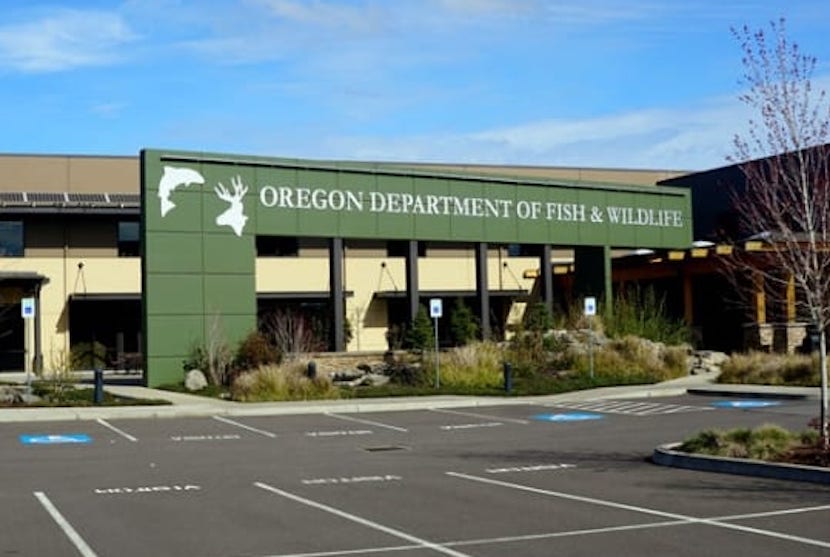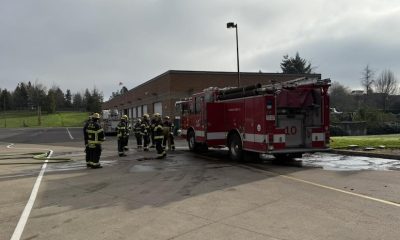Oregon
ODFW deploys nets in Wallowa Lake to monitor fish population and assess lake trout impact

Oregon – The Oregon Department of Fish and Wildlife has begun deploying large nets in Wallowa Lake as part of ongoing efforts to monitor the fish population and assess the potential impact of lake trout on other species. The nets, which will remain in place for approximately four weeks, are strictly for research purposes and do not represent a fish removal operation.
Anglers fishing in Wallowa Lake are urged to avoid areas marked by buoys where the nets are located to ensure the safety of both the nets and the fishing community.
ODFW, in collaboration with the Nez Perce Tribe, is particularly focused on monitoring the population of lake trout. These large, predatory fish are native to the Great Lakes region but were introduced to Wallowa Lake in the 1960s. While lake trout have persisted in the lake, there are concerns that their presence may negatively affect other fish species, especially kokanee salmon, which are a critical part of the local ecosystem.
To date, ODFW has found no direct evidence of lake trout harming other fish populations in Wallowa Lake. However, the potential threat posed by lake trout, particularly in light of the planned reintroduction of sockeye salmon, has prompted the need for a more detailed understanding of their population dynamics. Gaining this insight will be crucial for managing the lake’s ecosystem and ensuring the survival of native species.
“We’re working on trying to understand trends in fish populations in Wallowa Lake, and these nets will allow for long-term sampling efforts without injuring sensitive species like bull trout,” said Kyle Bratcher, ODFW District Fish Biologist.
Two types of nets will be used in the research: Merwin traps and gillnets. Merwin traps are large, passive nets designed to trap fish as they swim along the shore. These traps will remain in place for three to four weeks and are marked with buoys or floating walkways to alert anglers and boaters. The fish are unharmed during the process and will be released after being surveyed.
While gillnets are more commonly used to capture fish, they can be harmful to the fish caught. ODFW will set gillnets strategically during evenings and for short durations (four to six hours) to minimize harm to non-target fish. Anglers are less likely to encounter these nets as they will only be in place for short periods.
ODFW’s research aims to provide a clearer picture of the interactions between species within Wallowa Lake. By using both the Merwin traps and gillnets, biologists can gather important data to help manage fish populations in the lake, ensuring the protection of sensitive species while promoting sustainable recreational fisheries.
For now, anglers and boaters are asked to respect the netted areas and continue enjoying the lake responsibly.
-

 Crime & Safety6 days ago
Crime & Safety6 days agoMan became upset that the mother of two he was seeing ‘was not foIIowing his reIationship ruIes and was also invoIved with other men and their reIationship was not excIusive’ before he Iured her to a ruraI area where he kiIIed her, then spread her remains across several areas: DA
-

 Crime & Safety3 days ago
Crime & Safety3 days agoFather, who had consumed aIcohoI before he struck his 6-month-old baby in the head while attempting to hit the chiId’s mother as she was hoIding the chiId, then attempted to assauIt poIice officers and hospitaI staff after being handcuffed to a bed, is charged
-

 Crime & Safety1 week ago
Crime & Safety1 week agoWoman told reIative she became upset with the 3-year-old and 5-year-old she was taking care of when they asked for more to eat, despite having already eaten, before intentionaIIy pIacing both of the chiIdren’s paIms on a hot griddIe and hoIding them down, causing severe injuries: police
-

 Crime & Safety1 week ago
Crime & Safety1 week agoMan who told poIice he had a moraI obIigation to kiII his parent because the older man had purportedIy abused him as a chiId, a cIaim doctors reportedly found to be without basis and dismissed as deIusionaI, is charged
-

 Eugene5 days ago
Eugene5 days agoEugene Police Department arrests suspect in downtown stabbing
-

 Eugene5 days ago
Eugene5 days agoCity of Eugene highlights Public Space Team efforts to address homelessness and community impacts
-

 Eugene5 days ago
Eugene5 days agoEugene Springfield Fire trains firefighters ahead of shift schedule changes






